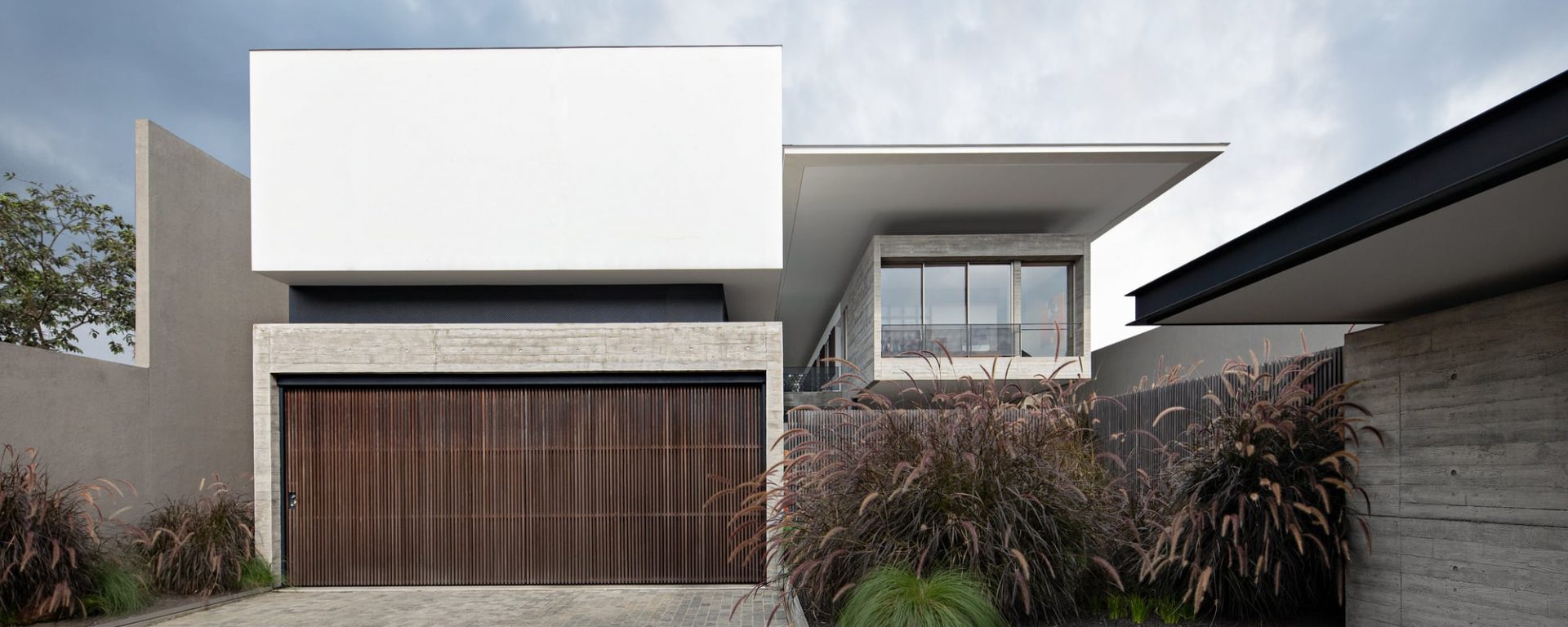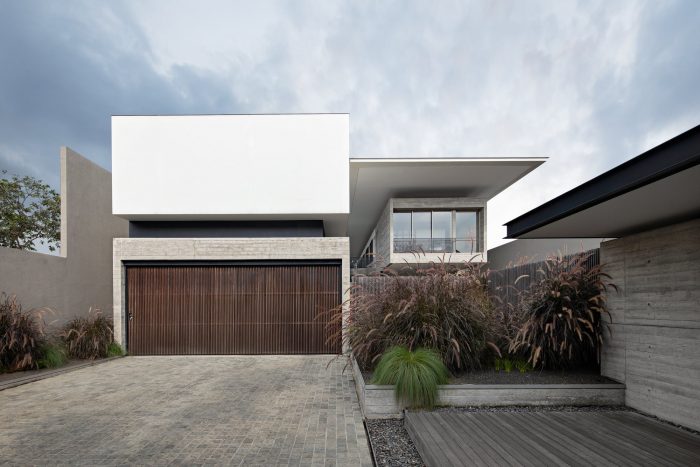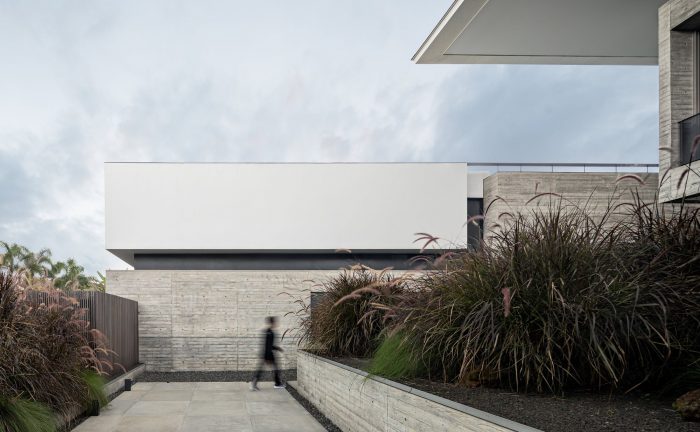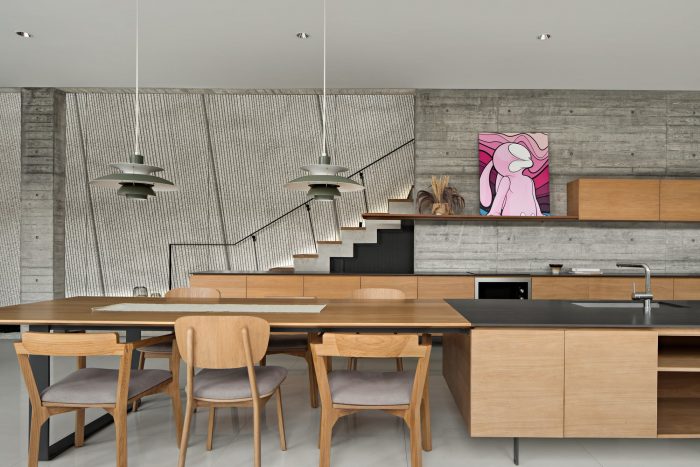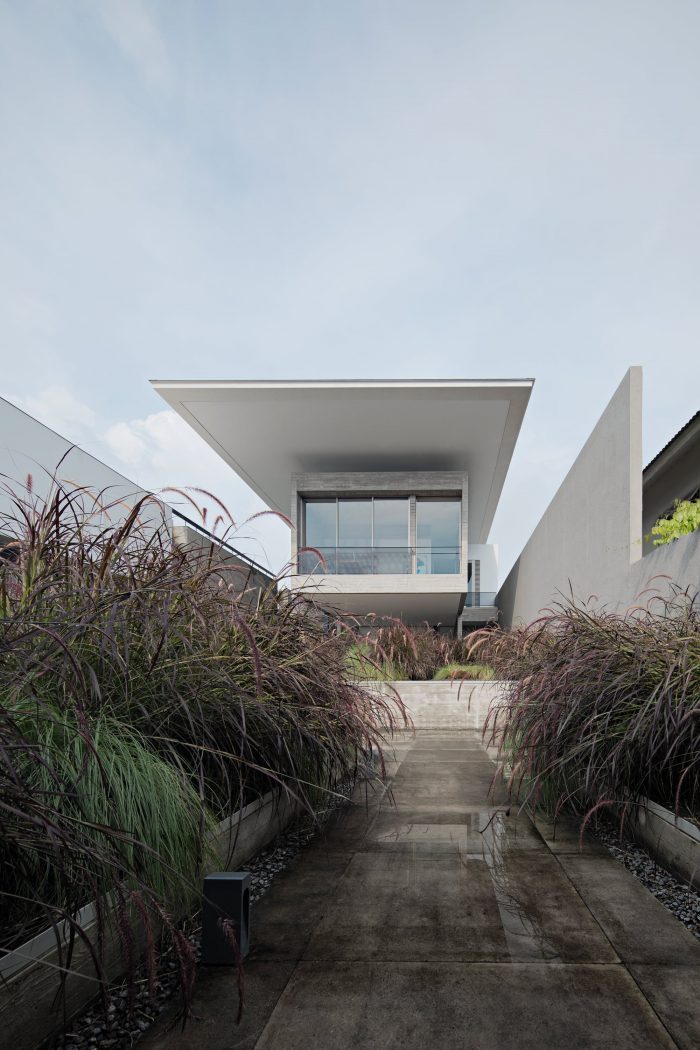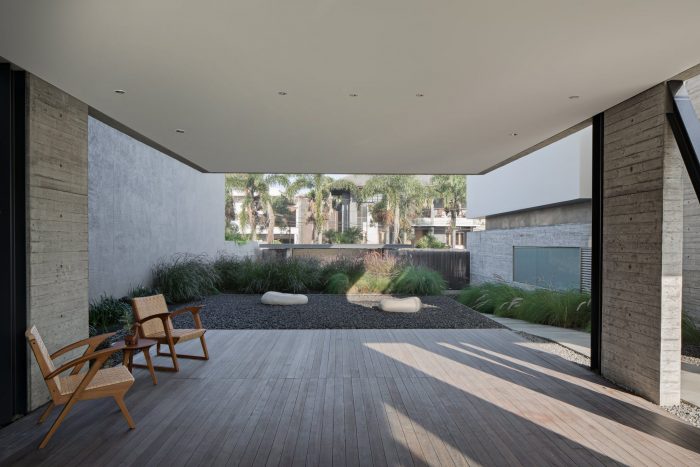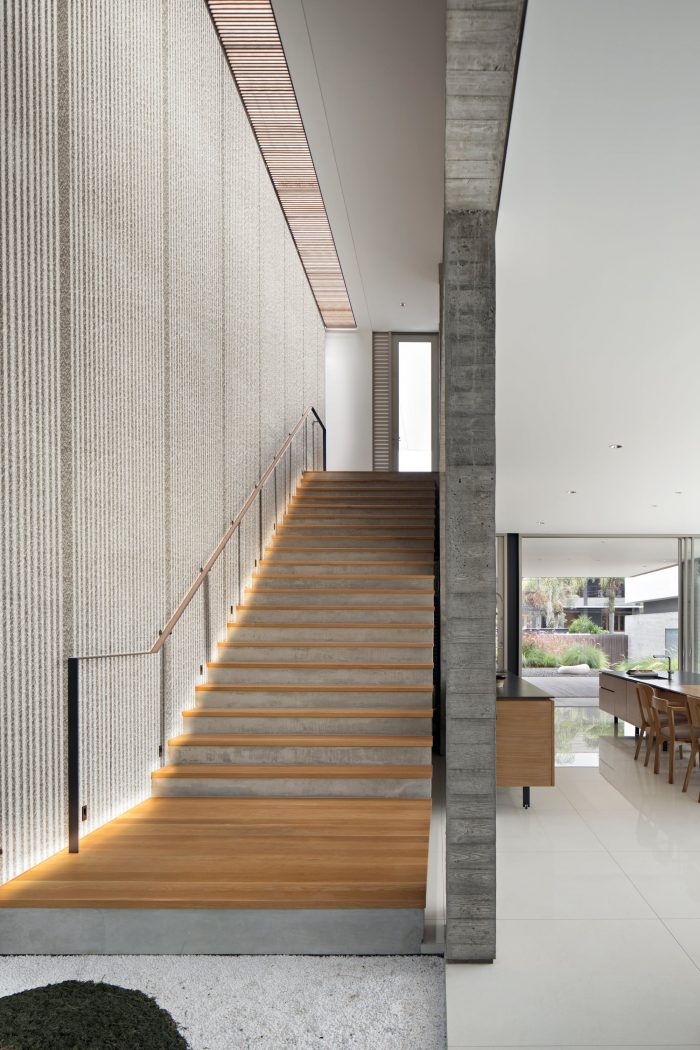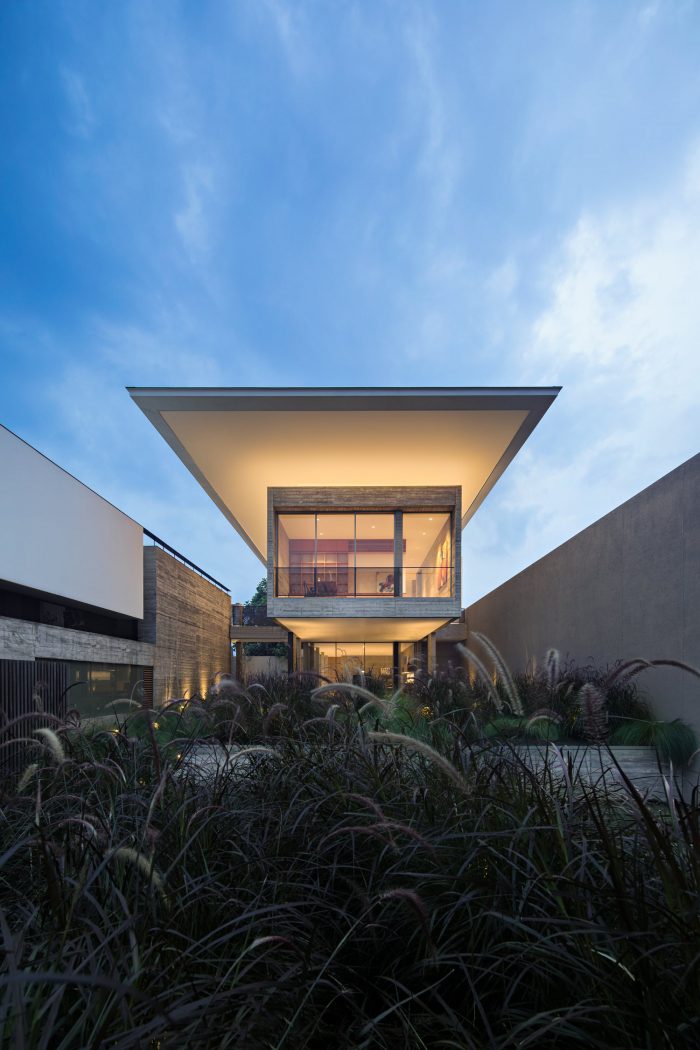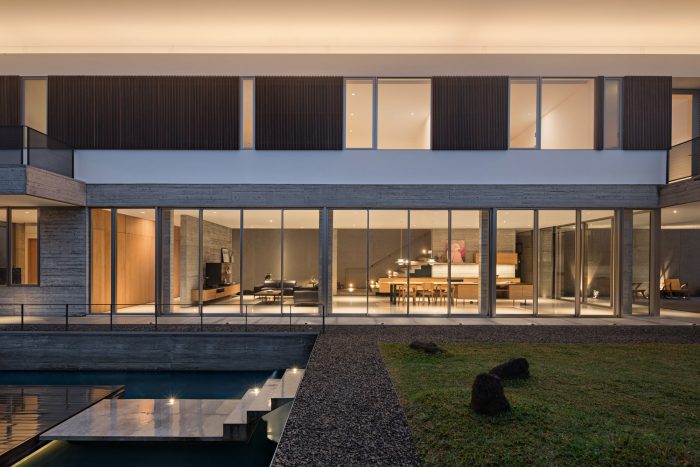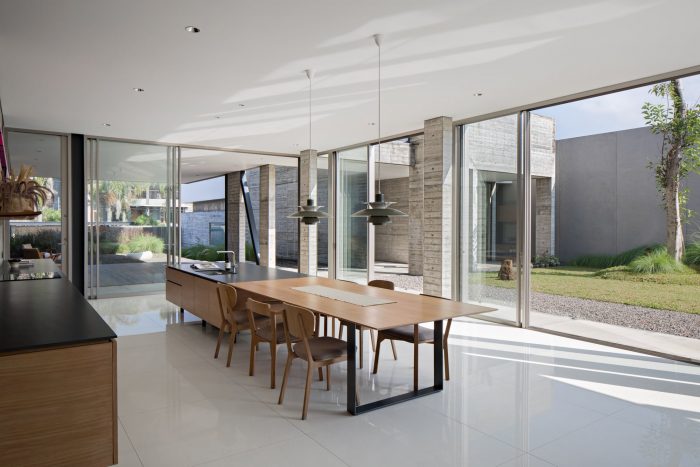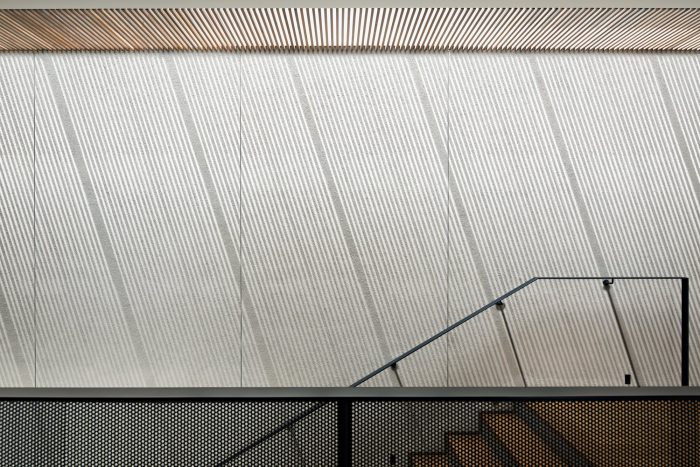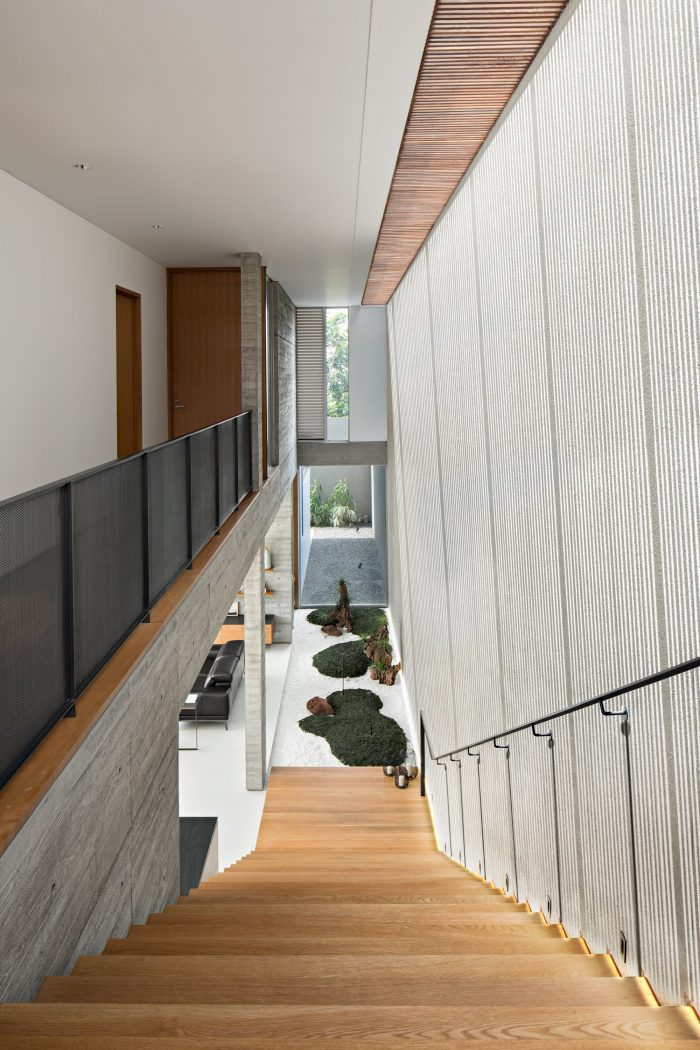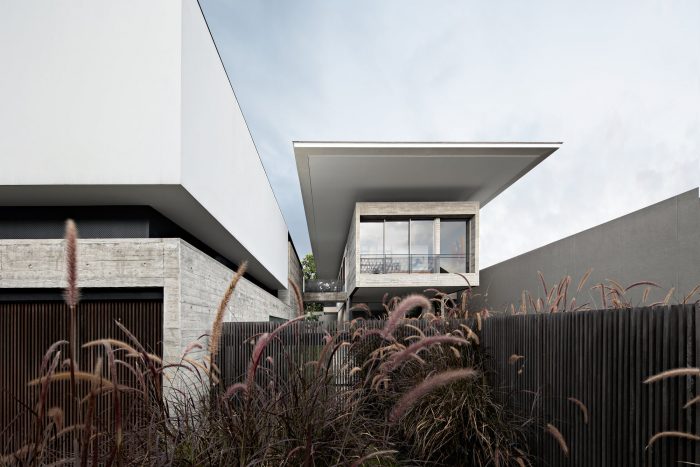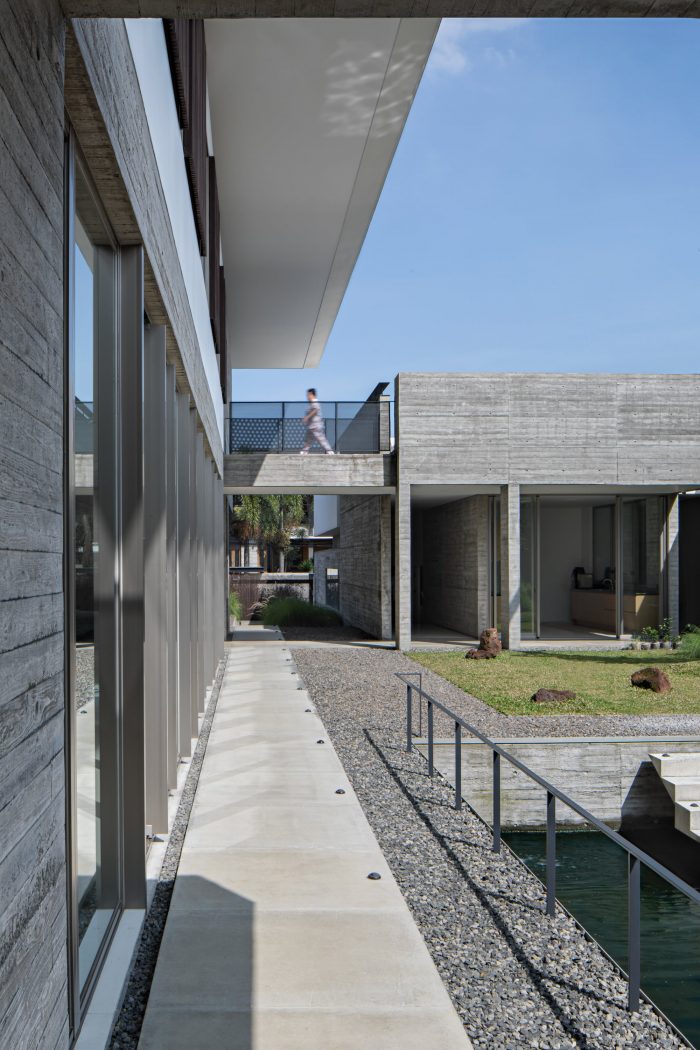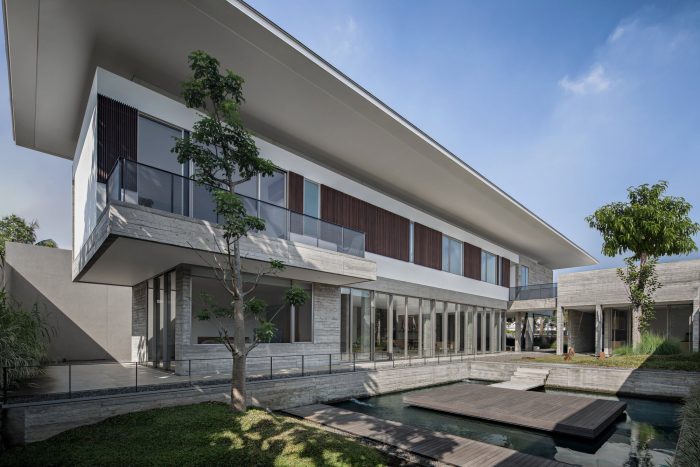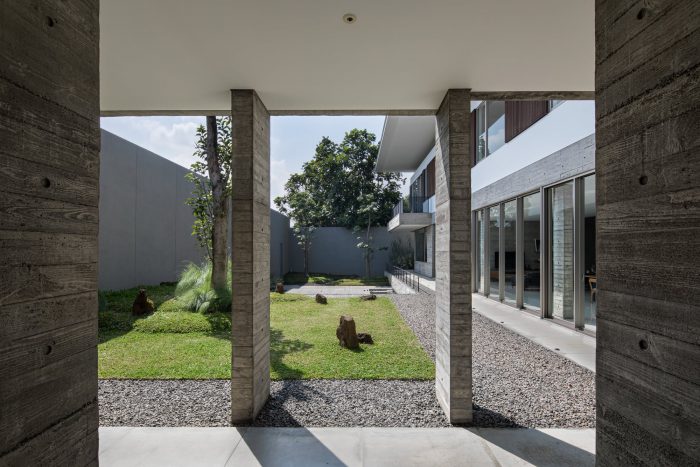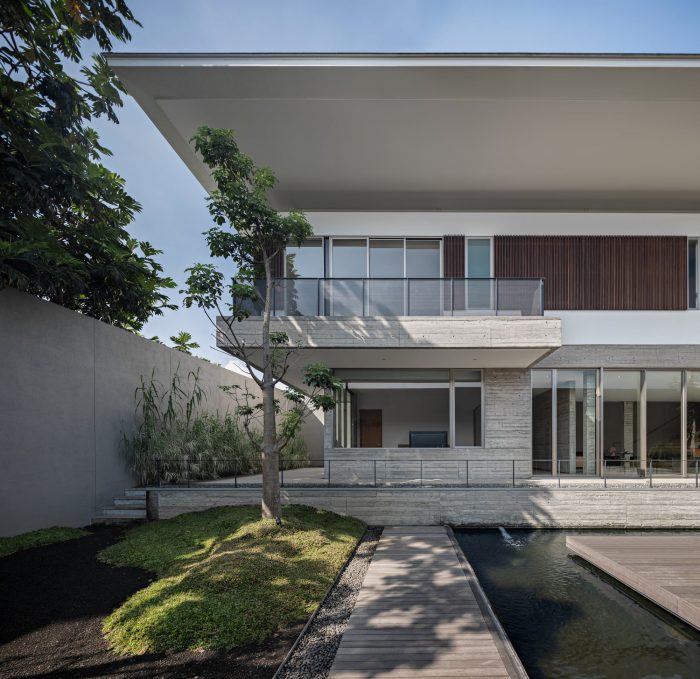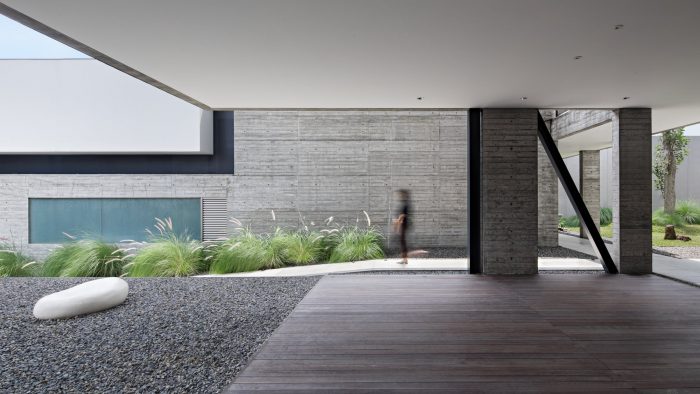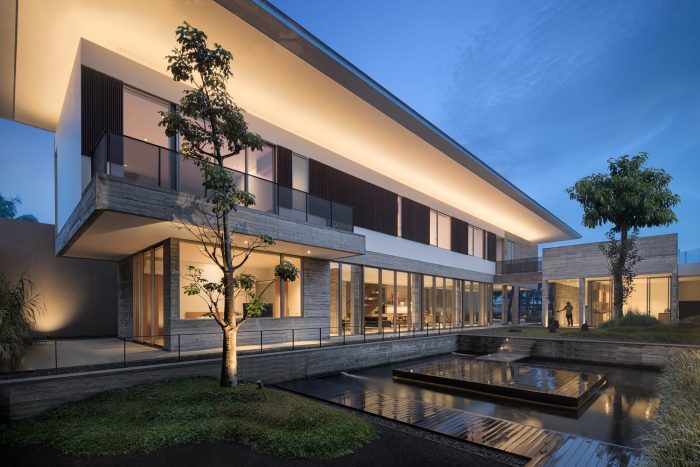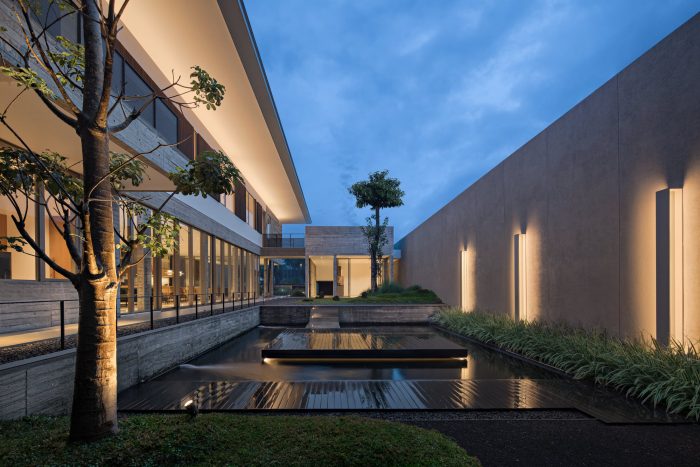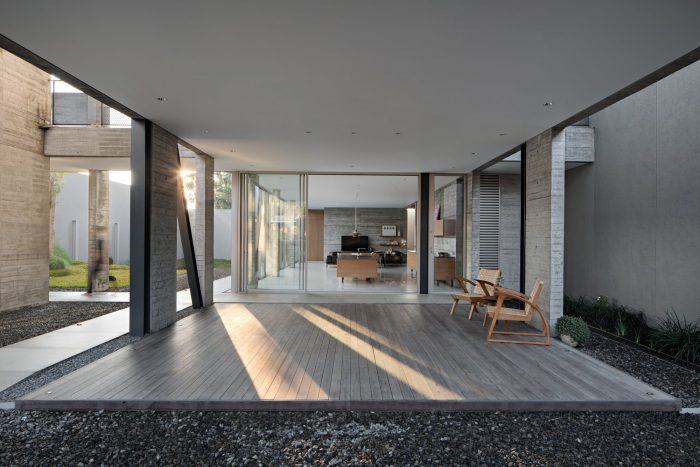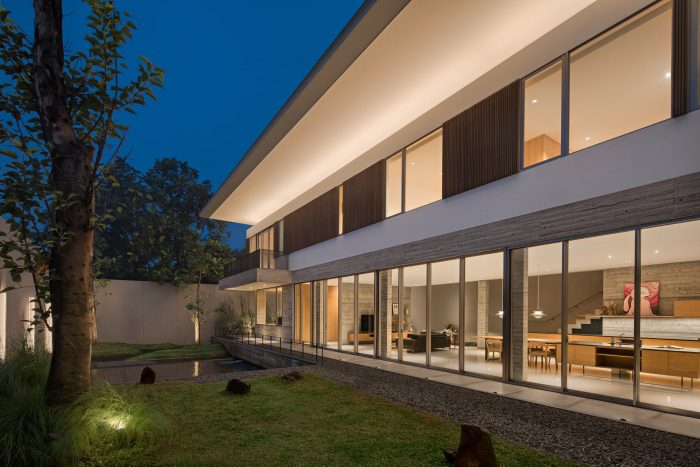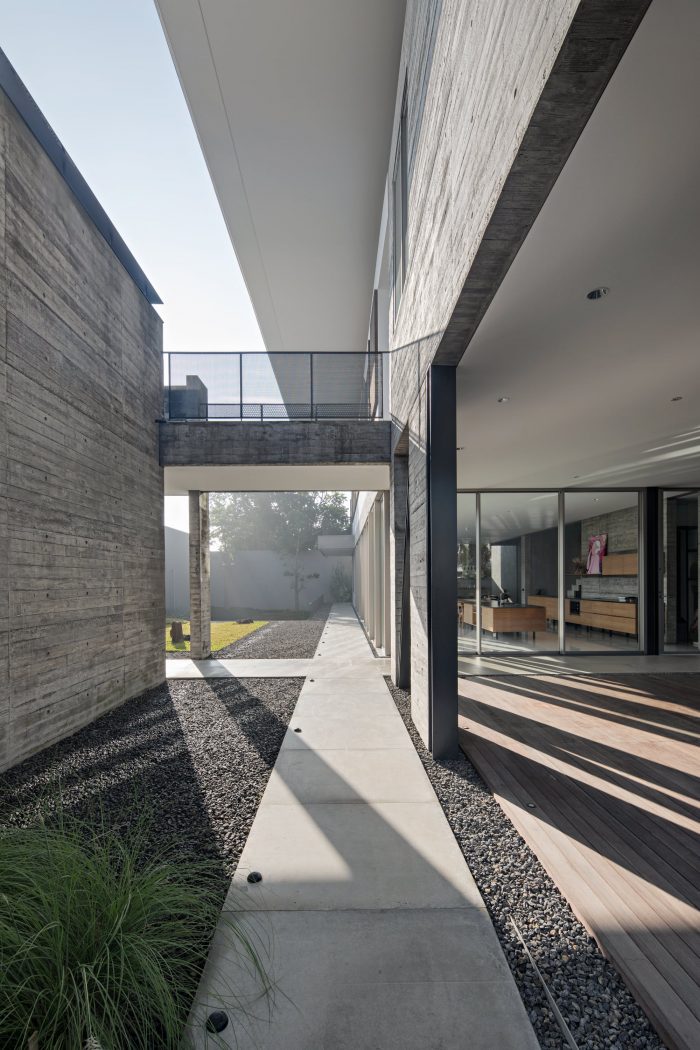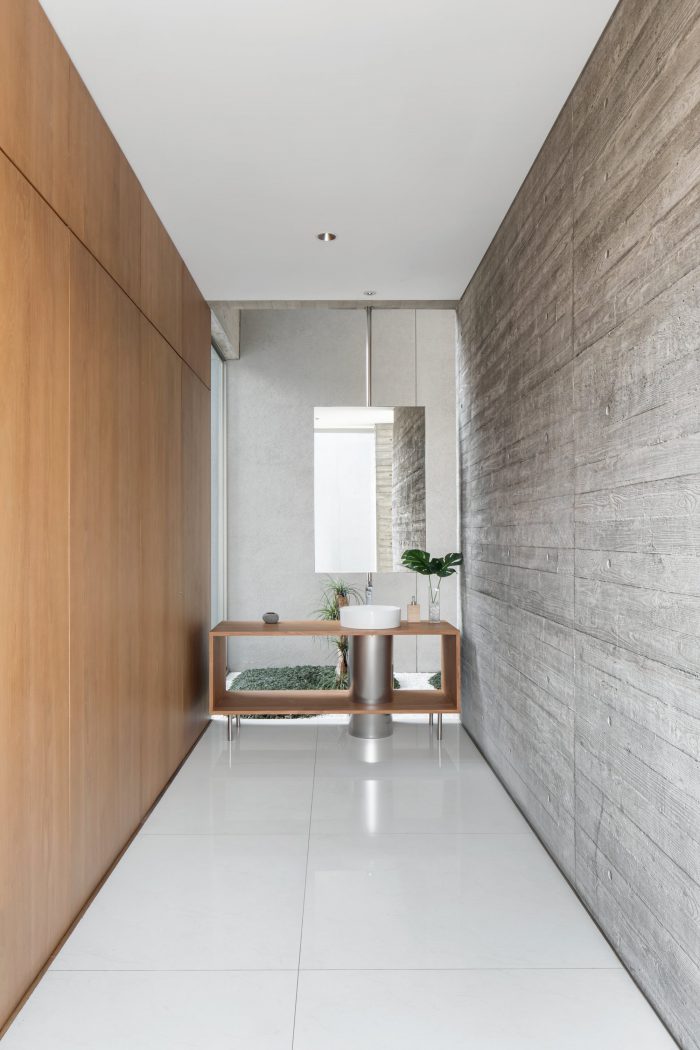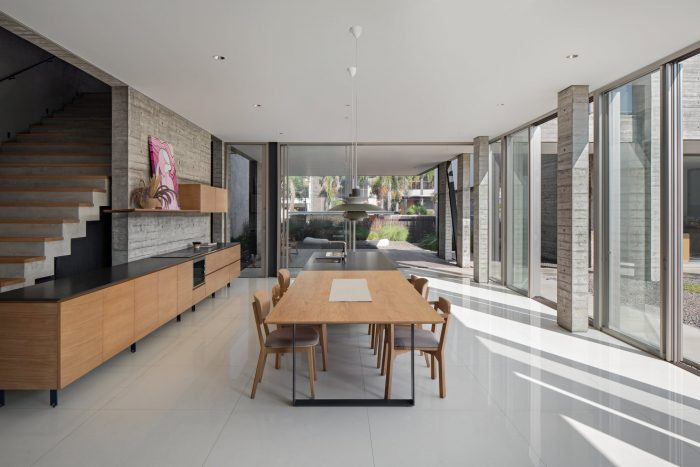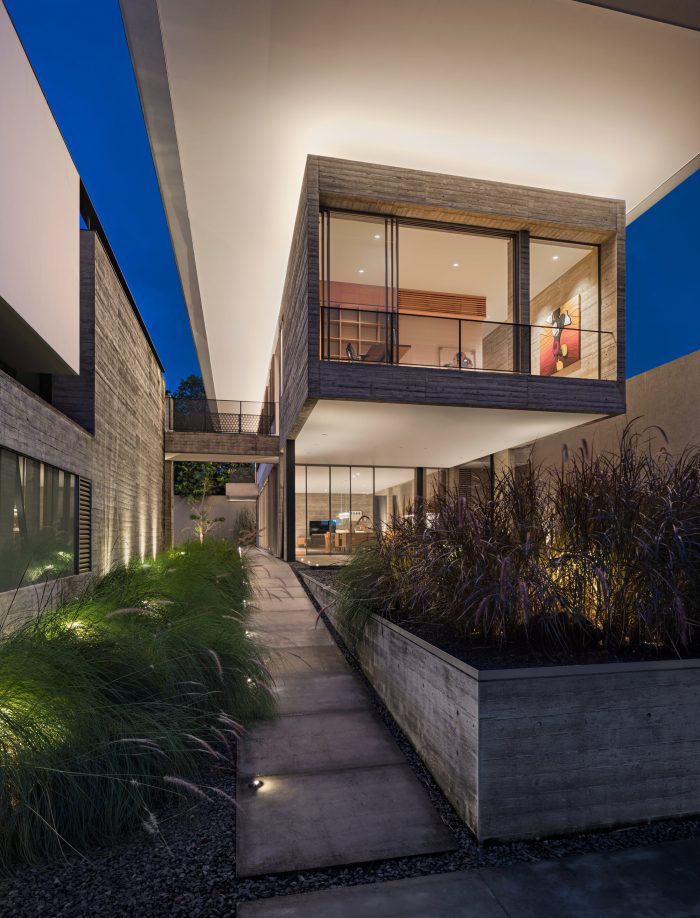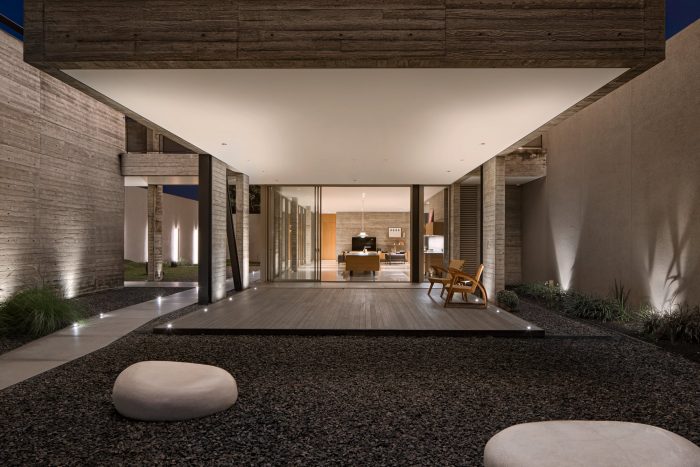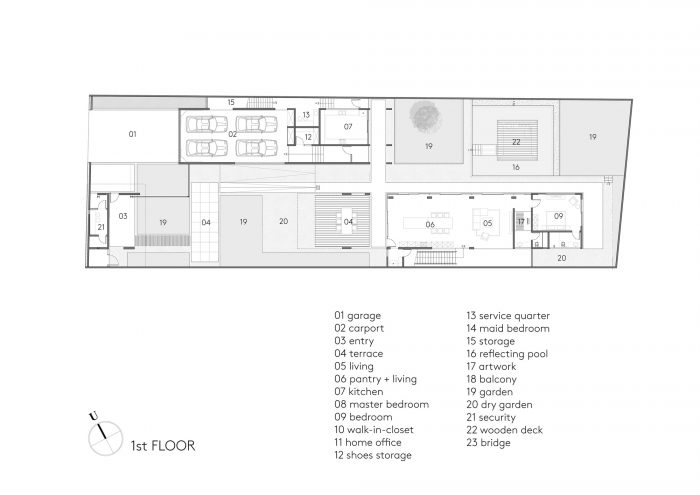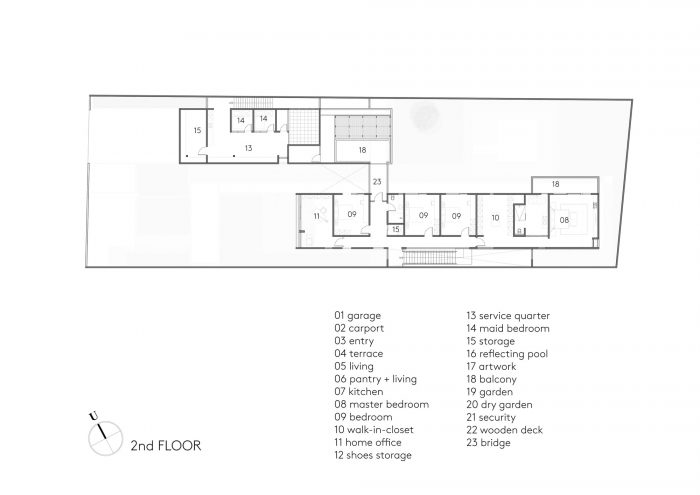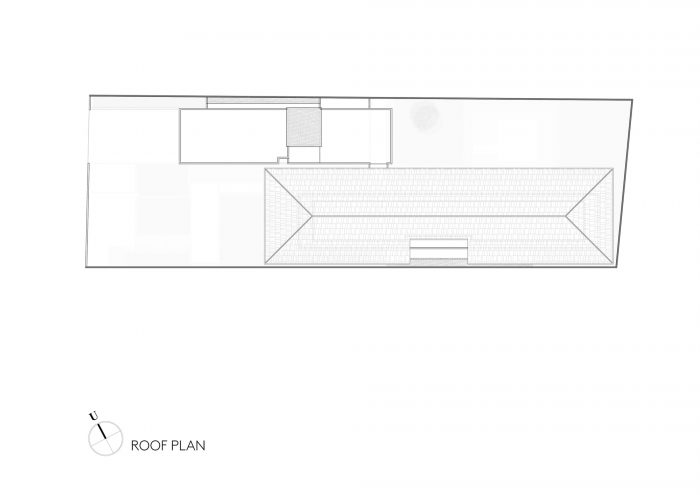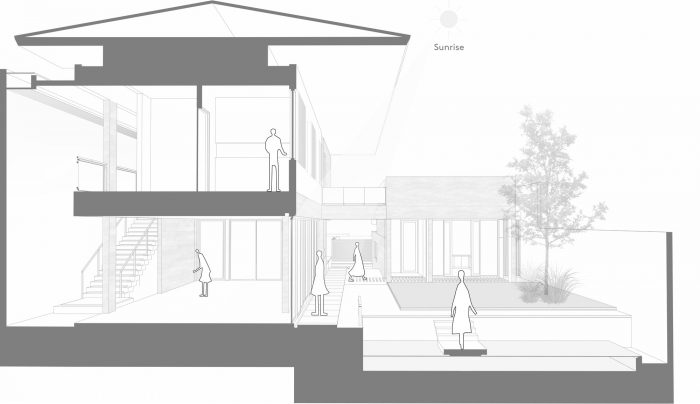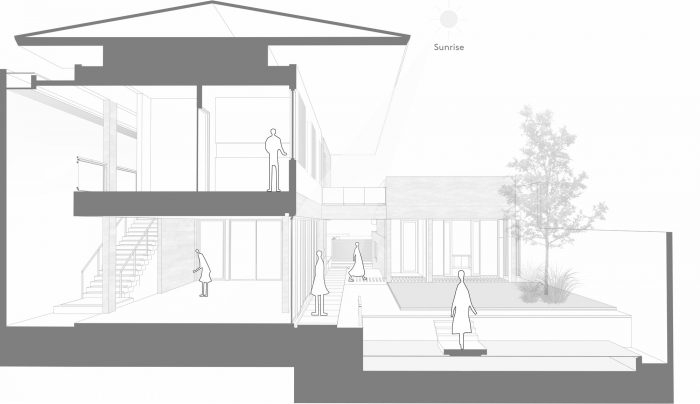离入口仅一步之遥,游客将被带入一个旅程,享受房子的建筑。悬浮屋位于印度尼西亚的万隆,展示了实验重力的建筑主题。从一开始,这个房子的建筑就想表明,通常看起来很重的混凝土可以被设计成看起来很轻。
Just a step away from the entrance, visitors will be taken on a journey to enjoy the architecture of the house. Located in Bandung, Indonesia, Hover House presents architectural themes that experiment with gravity. From the beginning, the architecture of this house wanted to show that concrete which usually seems heavy can be designed in such a way that it looks light.
在房子的入口处,有一个与建筑相得益彰的cogon草花园,人们可以享受其中。悬浮屋有3个体块,根据各自的功能划分。悬浮屋有3个体块,根据它们各自的功能进行划分。如果我们进入住宅区,有一个交叉点,将入口、主要生活区、服务区、前花园和后花园分开。因此,它感觉有一个分离,但仍然保持在一个单元中。房子本身的前面是一个半开放的门厅,框住了一个醒目的主楼的立面图,里面是主要的生活区。
At the entrance of the house, there is a cogon grass garden that compliments the architecture which people can enjoy. Hover House has 3 masses which are divided based on their respective functions. Hover House has 3 masses which are divided based on their respective functions. If we enter the house area, there is an intersection that divides the entrance, the main living quarter, the service area, the front garden, and the back garden. So it feels there is a separation but still remains in one unit. The house itself is preceded by a semi-open foyer, framing a striking elevational view of the main building that houses the main living quarters.
建筑变得更加质朴和粗暴,所以给游客留下了不同的印象。建筑师希望表明,野蛮主义的元素可以与热带建筑相结合,用长而宽的屋顶来控制雨水的流动。在设计过程中,建筑师团队讨论了很多,因为这个建筑采用了钢结构和混凝土结构的组合。
The architecture is made more rustic and brutal, so it gives a different impression to visitors. The architect wanted to show that elements of brutalism can be combined with tropical architecture with a long and wide roof to control the flow of rainwater. During the design process, the architect team discussed a lot because this building uses a combination of steel structure and concrete structure.
整个项目采用的主流材料是裸露的混凝土,通过使用 “重纹 “松木(Jati Belanda),产生了细致的木纹纹理。根据 “盘旋的房子 “这一主题,建筑师团队不仅在外观方面,而且在内部和照明方面都坚持应用这一主题。
The prevailing material utilized throughout the project is exposed concrete with a meticulously executed wood grain texture generated through the use of ‘heavy grained’ pine wood (Jati Belanda). In accordance with the theme, ‘hovering house’, the architect team consistently applied the theme not only in terms of the exterior but also interior and lighting.
为了加强 “盘旋 “的印象,室内也充满了强调这一主题的细节。家具是水平制作的,因此有一种’漂浮’和轻盈的印象。因此,不仅从外部,而且当用户在屋内时,也能感受到整个摆脱重力的体验。
To strengthen the impression of ‘hovering’, the interior is also filled with details that emphasize the theme. Furniture is made horizontally so that there is an impression of ‘floating’ and lightness. Thus, the entire gravity-defying experience can be felt not only from the outside but also when the users are inside the home.
Architects: Pranala Associates
Area : 760 m²
Year : 2020
Photographs :Mario Wibowo
Manufacturers : Hansgrohe, Louis Poulsen, Daikin, Duravit, MIWA, Tostem Aluminium
Lead Architects : Ronald Pallencaoe, Erick Laurentius, Darius Tanujoyo
Contractor : Bouw Atelier
Landscape : Larch Studio
Lighting Consultant : Lentera Art Lighting
Interior Design : Pranala Associates
Project Architects : Erick Laurentius, Chrystal Natalie
Furniture Consultant : Alpha Interdesign
City : Bandung
Country : Indonesia

